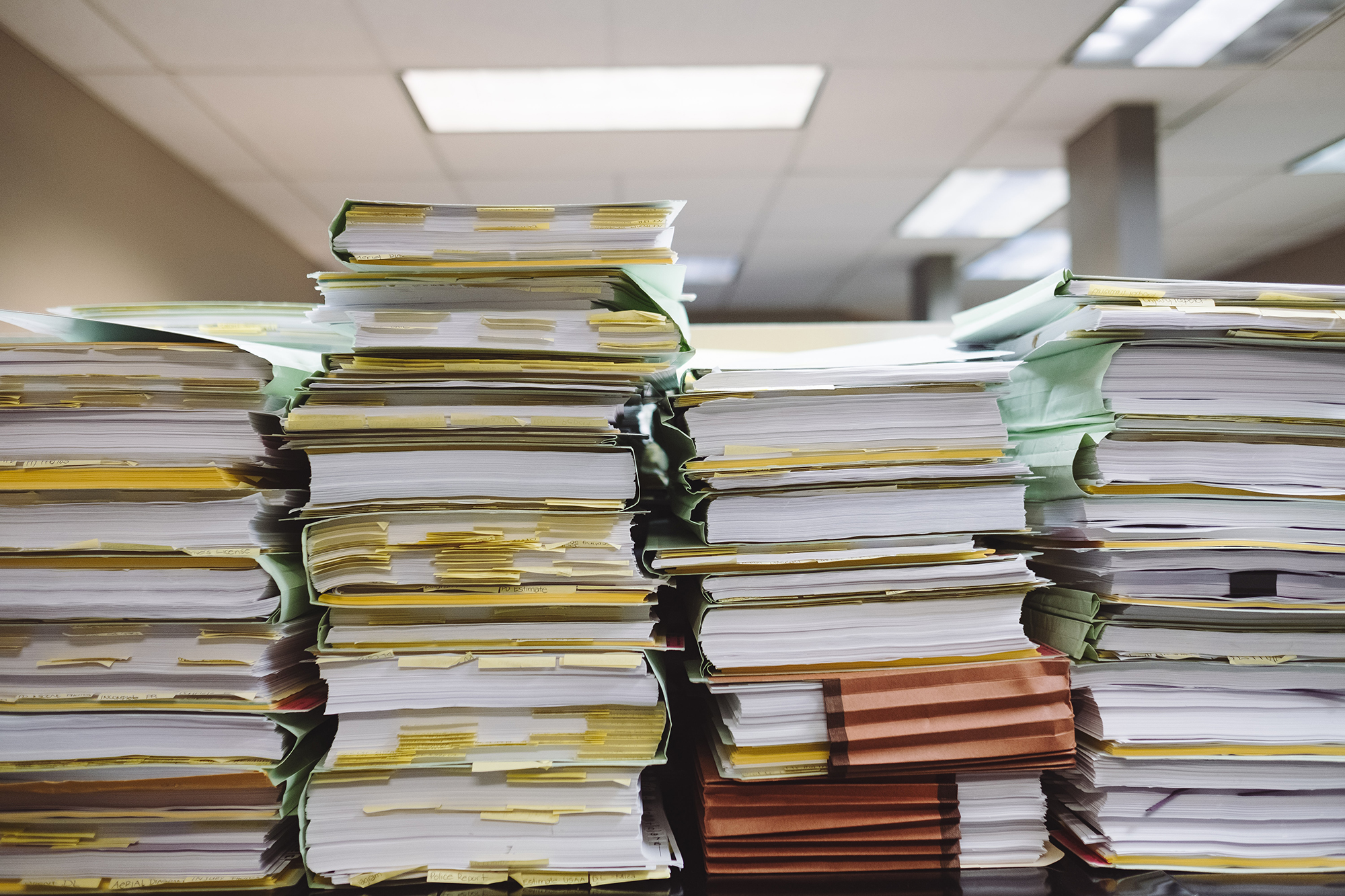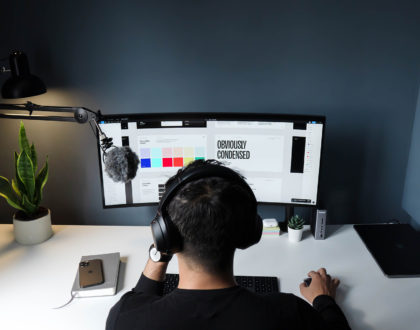Gijiroku – Keeping track of meetings in Japanese

by Florian
Record-keeping is a classic “newcomer task” at Japanese companies. It may seem boring at first, but for Japanese learners, it can be a challenge – and a way to improve communication skills.
コンテンツ
What is a Gijiroku?
„Gijiroku“ (議事録, ぎじろく) is the Japanese expression for records (or minutes) of a business meeting. Just like elsewhere, they are created and used to keep track of decision-making processes.
Meeting records sometimes come under great scrutiny in the world of business or politics – especially when they mysteriously vanish for unknown reasons. However, most of the time, they don’t garner much attention. But that doesn’t mean they’re not important!
In most cases, meeting records can be put together by filling out or following a simple template. Because of this, the task of creating them is often given to newcomers. I know, I know – doing write-ups of what other people have said seems pretty boring. but doing it in a foreign language can be surprisingly difficult.
Not only do you have to follow what’s going on in general, but you also have to correctly pick out the important bits and arrange them in a way that’s easy to understand for everyone – in Japanese! So if you’re entrusted with record-keeping, don’t take it too lightly. When communication issues arise down the line because of missing or inaccurate records, eyes might be on you. Plus, doing it properly can improve your Japanese!
Structure of a Japanese Meeting Record
Simply put, the goal of a meeting record is to efficiently inform the people who are reading it about the most important points and details about the meeting. Those points can be identified by looking at the so-called „five Ws“:
- ■ Who (だれ)
- ■ Where (どこ)
- ■ When (いつ)
- ■ What (何を)
- ■ Why (なぜ)
These are sometimes paired with the „two Hs“:
- ■ How (どうやって)
- ■ How Much (いくら)
Since both of these start with „How“ in English, the non-Japanese standard expression seems to be „one H“. However, because they translate into どうやって and いくら respectively, they are sometimes treated as two separate points in Japanese.
Following these guidelines, the structure of the record of a meeting looks something like this.
Basic Information
You start at the top with basic information about the meeting. Where did it take place? At what time? Who participated? What were the main talking points (議題, ぎだい)?
For easy referencing, this information is usually listed in short bullet points, with markers like squares (■) or lenticular brackets (【】) denoting each information category. Using Microsoft IME, you can get the black squares by typing しかく (square) and then scrolling through the conversion options. This also works for other geometrical shapes like triangles (さんかく), circles (まる), arrows (やじるし), etc.
When listing the participants, make sure to not forget each person’s proper title. Your name, of course, should be the last one listed, without any title or honorifics (ex. さん).
Example:
売上向上プロジェクトミーティング
議事録
2020年5月8日
【日時】
2020年5月8日、14:00 ~ 14:30
【場所】
3階 B会議室
【参加者】
鈴木課長、高島主任、浅沼さん、遠藤さん、尾形さん、スミス
【議題】
・ブレーンストーミングの結果発表
・今後の方針を確定
・スケジュール確認
Meeting Details
This is the part where you simply write everything that transpired during the meeting, usually in chronological order. You can title this section 会議内容 (かいぎないよう, meeting details) or 共有事項 (きょうゆうじこう, items shared) This part can be a bit looser than the rest, but should still focus on the important parts as much as possible. If applicable, write the names of the contributors behind their inputs.
Instead of structuring this part chronologically, you can also give each participant their own section and summarize everything they said there. This can be useful for meetings where people are doing separate presentations.
Regardless of what method you choose, try to break up information, and use bullet points/labels to make it easy to grasp.
Example:
ブレーンストーミング結果【新しい広告手段】
・動画、インフルエンサー活用(浅沼さん)
・リスティング広告(高島主任、遠藤さん)
・メールマガジン、ブログ(尾形さん)
・イベント、動画(遠藤さん)
Decisions
This is a list of all things that were decided upon during the meeting. In Japanese, these are usually called 決定事項 (けっていじこう) or, more simply, 決まったこと (きまったこと).
Depending on what you wrote under the “meeting contents” point, there might be some duplicate information here. In that case, list it here one more time regardless. A meeting record isn’t meant to be read strictly from bottom to top, but rather to be quickly sifted through later. Things can be hard to find if they’re buried in the chronological “things that happened” part.
Example:
【決定事項】
・リスティング広告を新たな広告手段として検討する
・5月末まで森田部長への提案資料を提出する
Leftover Tasks (To Do)
This point is also rather self-explanatory. Simply list all the things that still have to be done. I’ve seen these labeled as 課題 (かだい), 次回までやること (じかいまでやること), 次回まで必要なこと (じかいまでひつようなこと), and “To Do”.
Add specific dates etc. if a deadline was decided upon. Otherwise, write what the next step is (ex. need to confirm with management).
Example:
【To Do】
・広告費用について、3課の中村さんと確認(尾形さん、5月10日まで)
・リスティング広告用のキーワード集め(各自、5月13日まで)
・キーワード候補をまとめた資料を作成(浅沼さん、5月14日まで)
What to keep in Mind
Finally, here are some basic things to always keep in mind when it comes to meeting documentation.
Keep your initial notes simple, but clear
When you’re in the meeting and everyone is talking at their regular speed, you often don’t have the time to neatly put everything into a structured format right away. Regardless if you’re typing or writing by hand, you have to be clever with your notes. Don’t write down everything that people say, just the most important parts.
Your notes are just for you and no one has to ever see them, so it’s OK if they’re a bit messy, written in kana only, or even in English/your native language. I’d advise you to try your best and taking them in Japanese though. Having to translate them back later comes with the risk of information loss.
Write for others, not for yourself
In contrast to your notes, the proper record document you create is not for yourself, but for everyone who participated (and maybe even people who weren’t there). While being succinct is a good thing, leaving out too much information reduces the usefulness of the record.
Things that are obvious to you might not be so to others, so always ask yourself if what you wrote could still be understood weeks later, when everyone has forgotten about the meeting already.
Creating the official document as soon as possible is key for future comprehensibility. Even waiting just a few hours can mean you have to make assumptions or have to check back with individual people again.
Preparation is half the work
Most of the time, you will know about the meeting you’re attending in advance. Chances are that some basic information (time and place, participants, general talking points) has already been shared somewhere beforehand. To avoid stress during the actual meeting, gather and check as much of that information as possible. Keeping up will be much easier when you know what to expect.
Sometimes, you will not only be tasked with the records, but also with organizing the whole meeting. In that case, you’ll have to create an agenda (アジェンダ) and share it with the participants. The format is a shorter version of the record and consists of basic information and notes on what will be discussed (議題, ぎだい).
To make things easier for both you and your co-workers, try to be as specific as possible when creating an agenda. Being too vague will lead to those infamous meetings where everyone is just kind of sitting around and then leaves without having gained anything from it.
Recommended Posts

How to Get Along with Your Japanese Boss
25 5月 2021 - Work, Working Culture

The 10 Most Popular Japanese Companies in 2021
19 5月 2021 - Work

